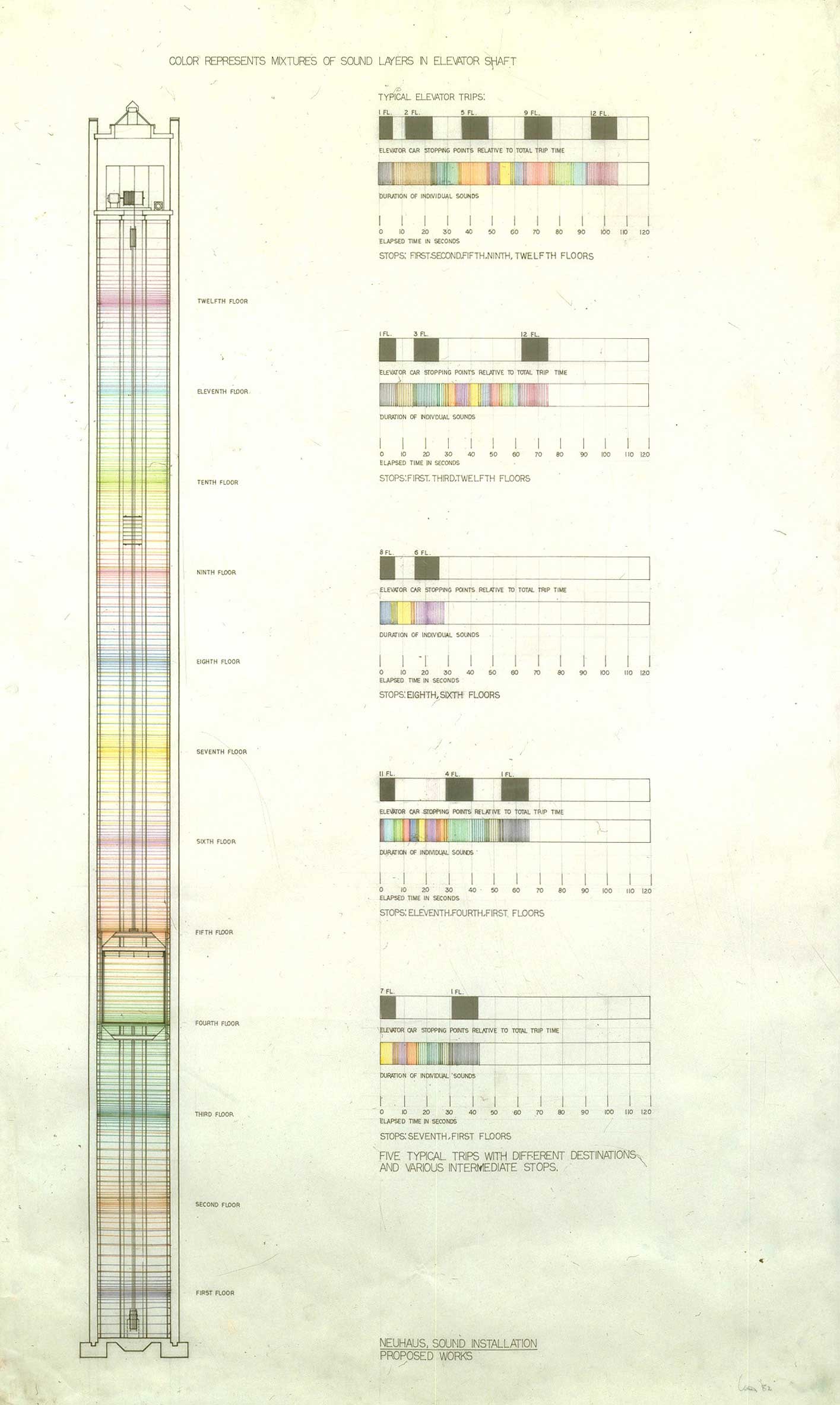Elevator
I am struck by the sense of dislocation in most elevators. As elevator manufacturers have made starts and stops smoother and acceleration more gradual, we have inadvertently been left in a perceptual limbo, with only some numbered lights to tell us that we are actually moving. We enter in one place, the doors close and with a barely perceptible sense of motion somehow when the doors open we are in a different place. It was probably this which was the impetus for the idea of making a sound work which would articulate an elevator journey, a subtle aural presence which would evolve with each trip.
In thinking further about the idea it became clear that by controlling sound in the car with the elevator's motion and position, one could make a sound work which was unique for the itinerary of each elevator trip reflecting the pathways of the elevator's passengers.
To take a simple example, if each floor has its own sound, then each of these sounds would be heard by passengers as a different point in the elevator's path as it passes up and down its shaft way. The elevator's movement would create a succession of the sounds. Thus, what is heard by passengers depends not only on their destinations – where they get on or off determines which of the floors they pass and thus the sounds they hear – but also on the destinations of the other passengers in the same elevator car. Their destinations determine the pattern of elevator speeds and stops which compress and expand the sound elements in time slowing and speeding their succession. There are, of course, more complex options as well.
